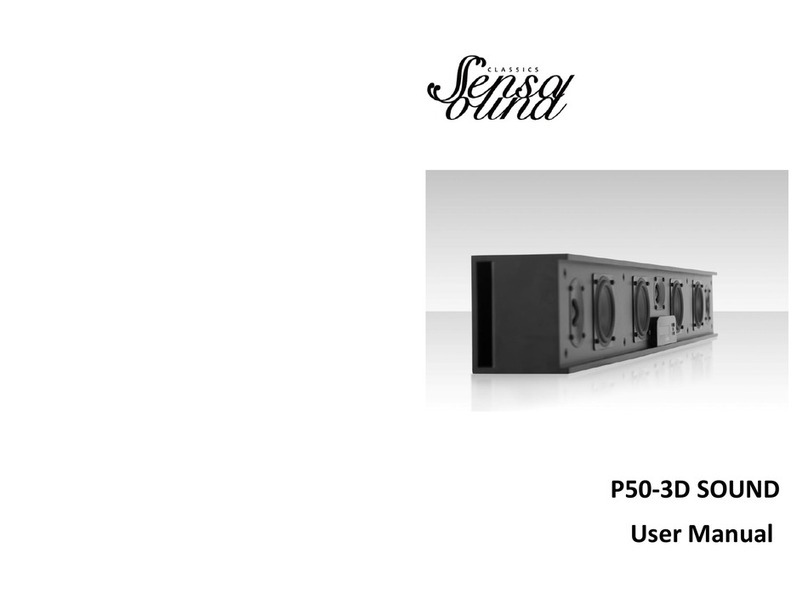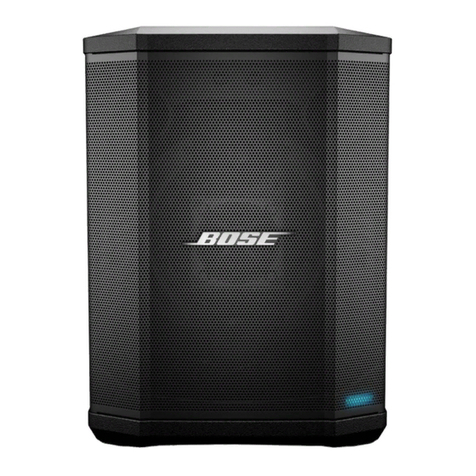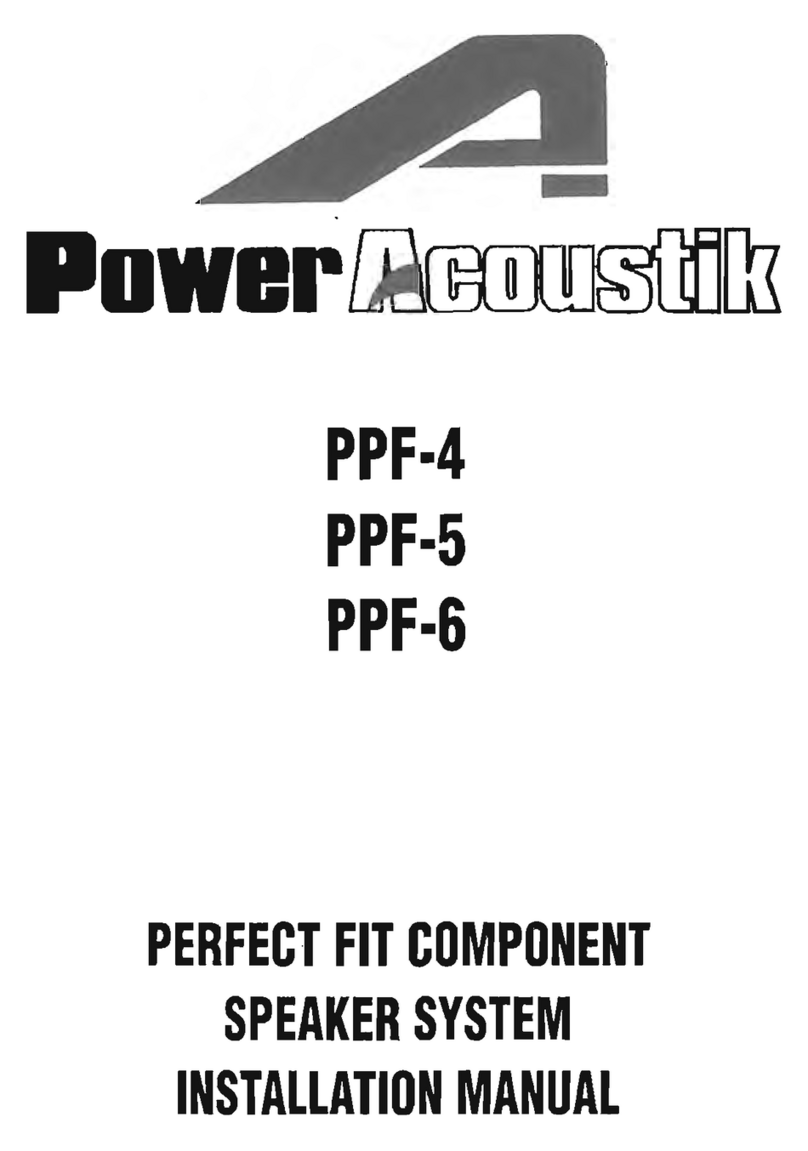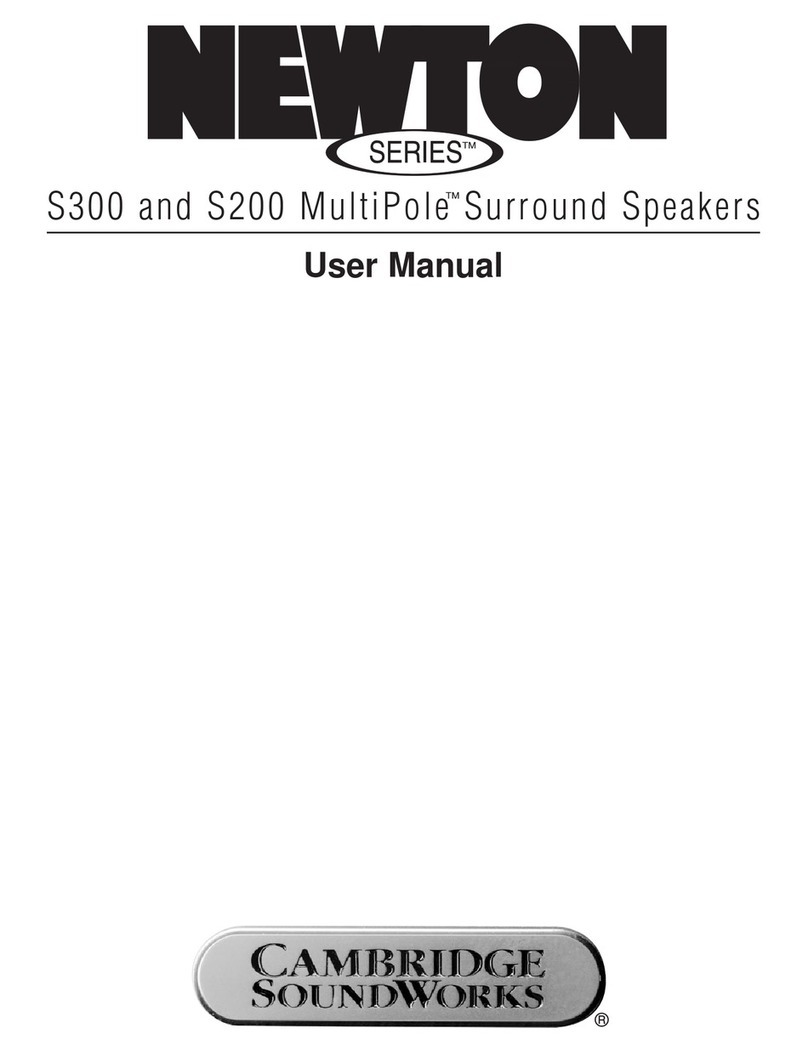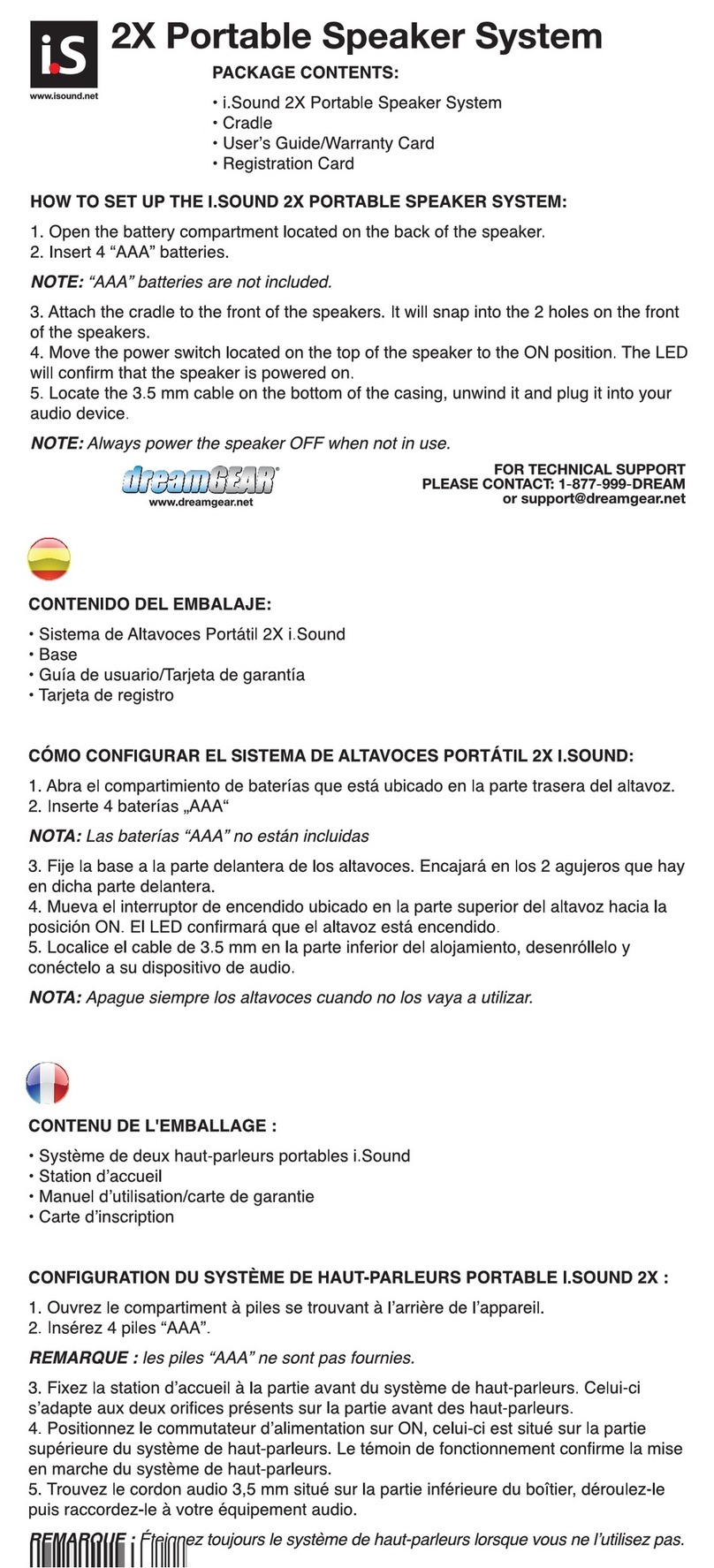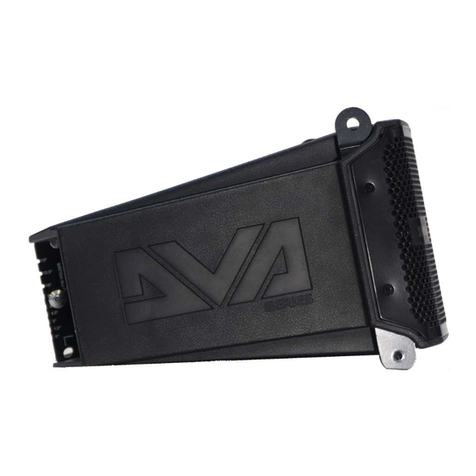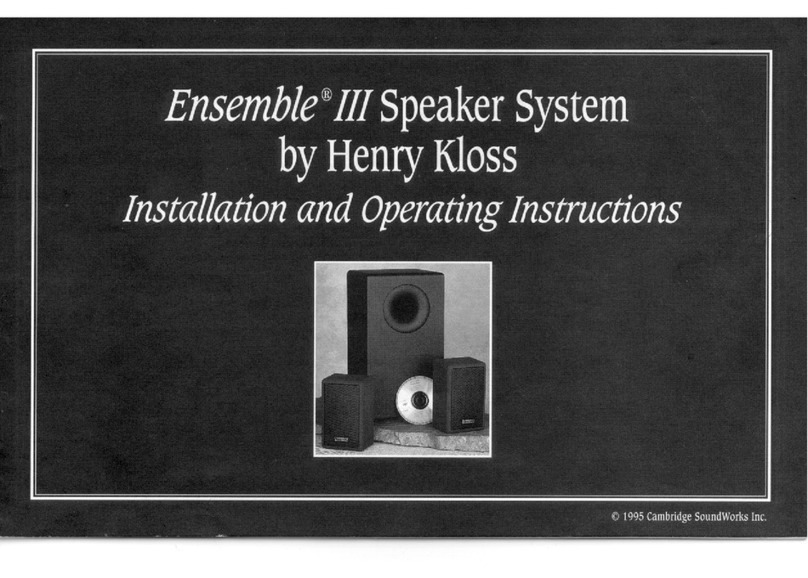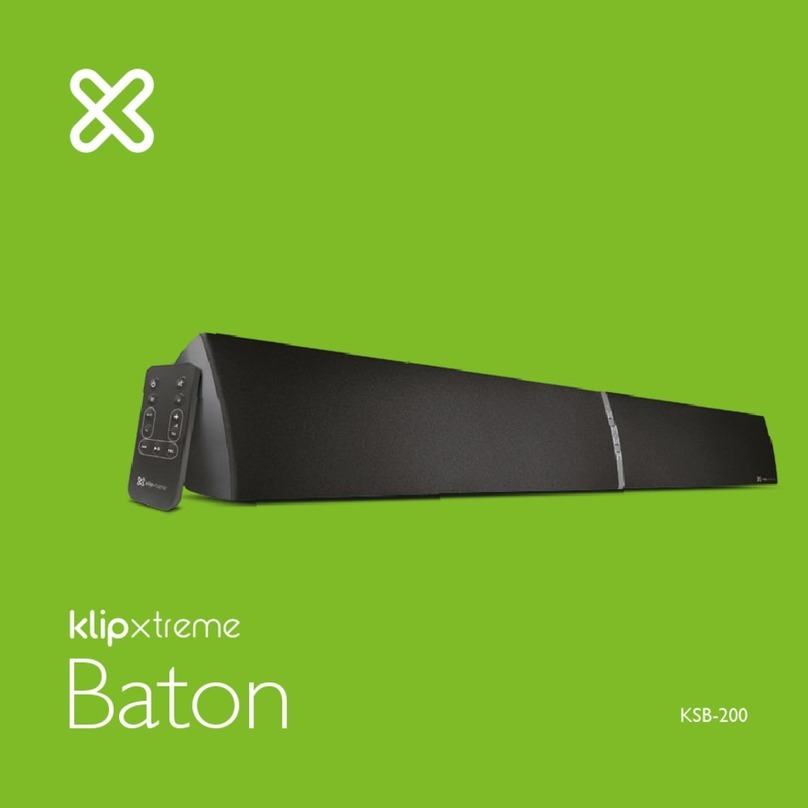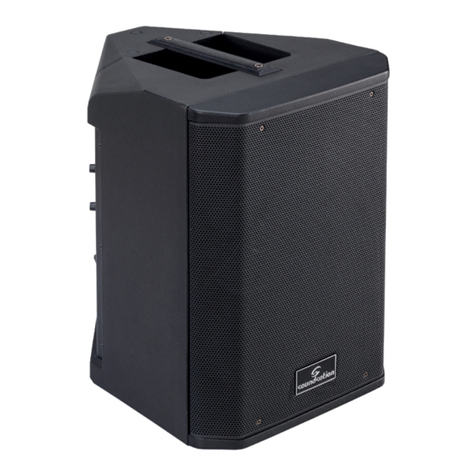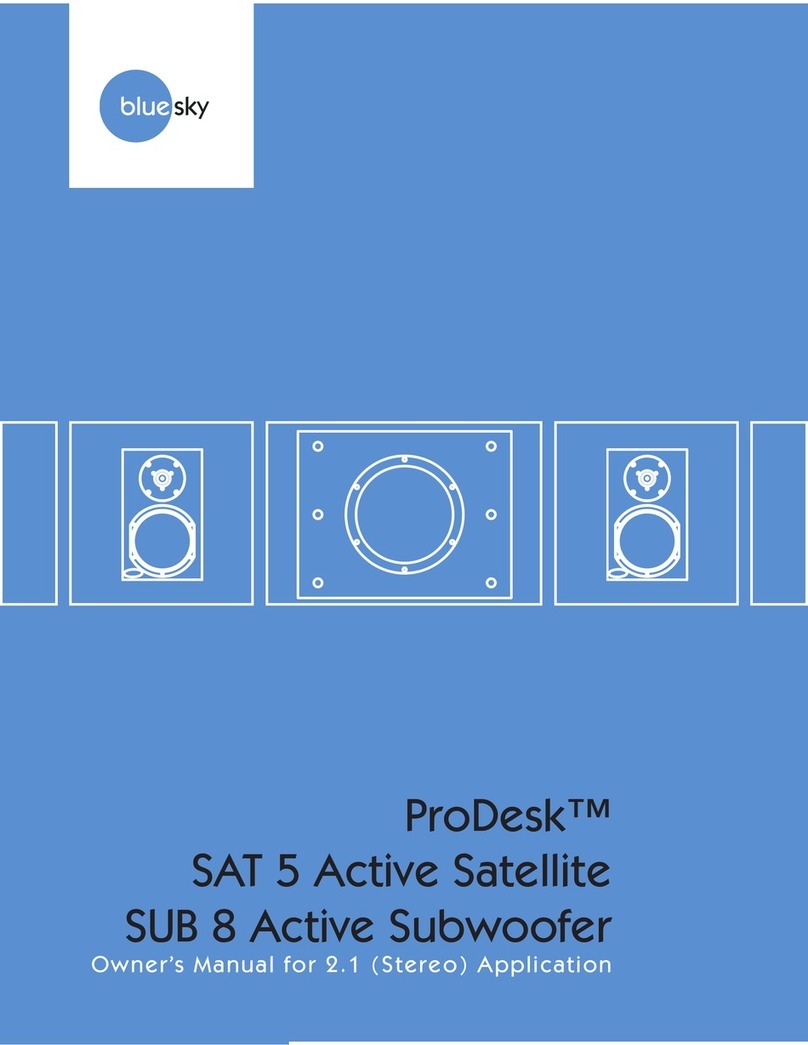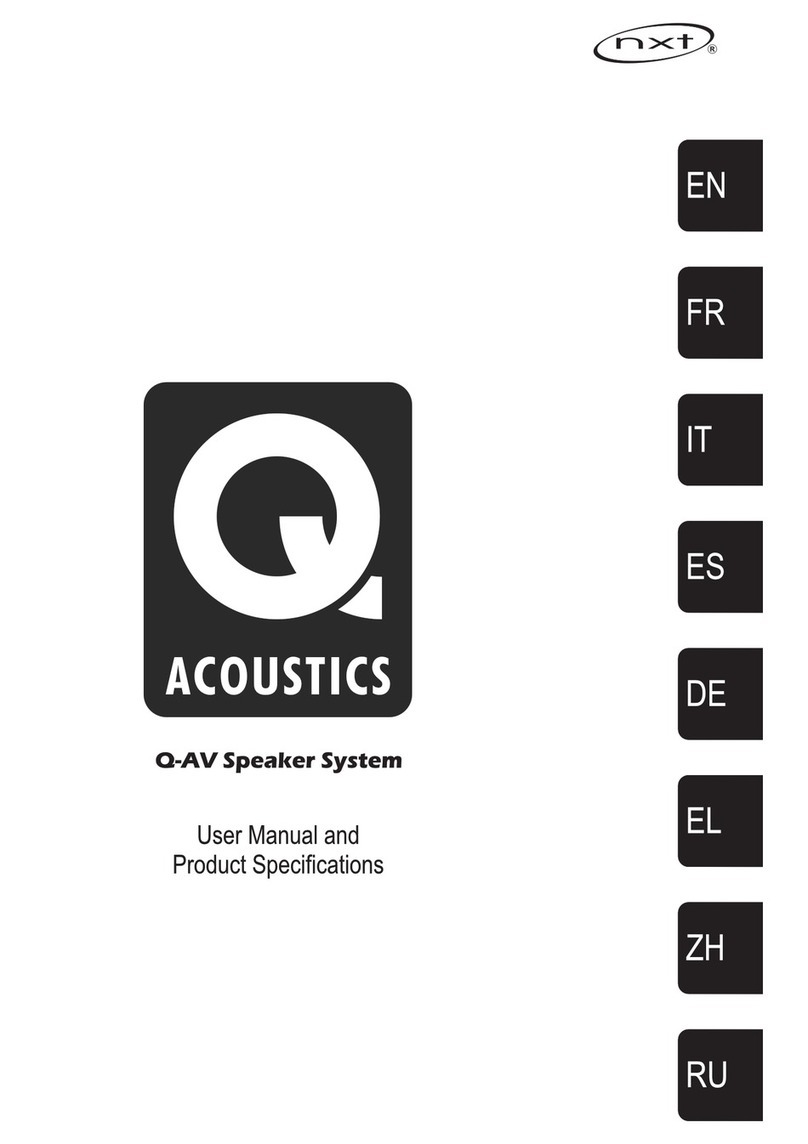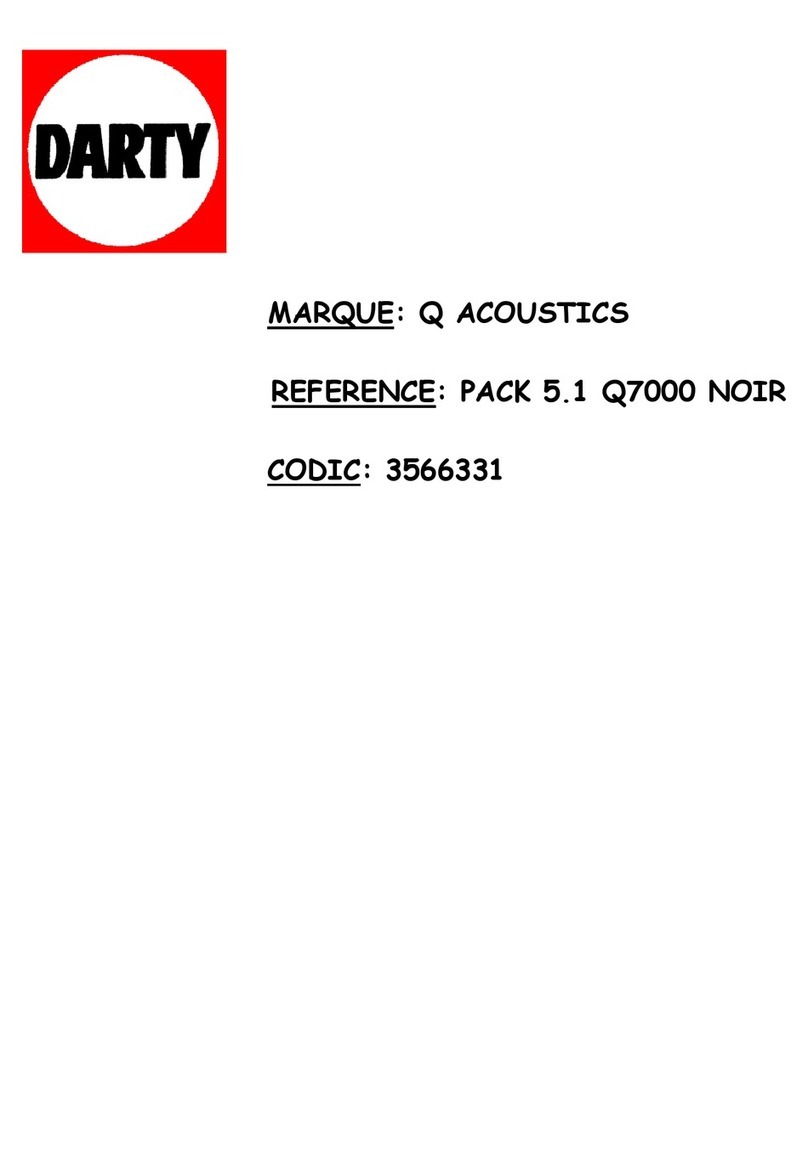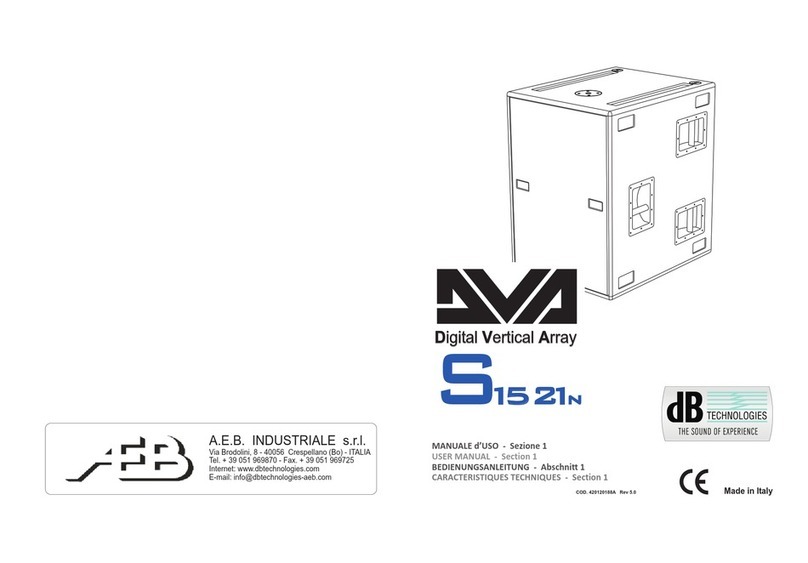CARATTERISTICHE E PROTEZIONI
Griglie frontali
Visto l’utilizzo professionale di questi diffusori, i componenti sono protetti frontalmente da
una lamiera forata con spessore 1,2mm e foam interno.
Raffreddamento
Il controllo termico è gestito dal microprocessore centrale (main) che interagendo con i
microprocessori locali (amplificatori e alimentatore) comunica i dati al DSP per le eventuali
correzioni.
In caso di surriscaldamento eccessivo del modulo amplificatore, il volume viene ridotto
gradualmente a step di 0,1dB fino alla stabilizzazione termica del modulo.
Il volume viene ripristinato automaticamente al raggiungimento delle normali temperatura
di esercizio.
Accensione
La regolare accensione del diffusore è garantita da una procedura di inizializzazione
durante la quale il modulo è alimentato dall’alimentatore ausiliare.
Quando tutte le periferiche dell’amplificatore vengono correttamente rilevate viene attivato
l’alimentatore principale.
La tecnologia IPOS (Intelligent Power-On Sequence) introduce un ritardo casuale e
differenziato per ogni modulo prima della accensione della PSU (Power Supply Unit)
principale.
Questo evita che gli spunti di corrente in accensione dei vari moduli si sommino
sovraccaricando la linea di alimentazioneAC.
Al termine della procedura di avvio, sul modulo amplificatore solo il LED verde “READY”
rimane acceso fisso.
Indicazioni di guasto e protezioni
Il microprocessore centrale è in grado di segnalare diversi tipi di guasti tramite diversi
lampeggi dei LED “READY”, “MUTE/PROT” e “LIMIT” come riportato nella tabella della
diagnostica
I tre tipi di guasto possibili sono:
1) ATTENZIONE: viene rilevato una errore o un malfunzionamento autoripristinate non
grave e le prestazioni del diffusore non vengono limitate
2) LIMITAZIONE: viene rilevato un errore e vengono limitate le prestazioni del diffusore .
Il livello sonoro viene ridotto oppure vengono disabilitati uno o più amplificatori.
Questo stato influisce parzialmente sul funzionamento corretto del diffusore.
Se il problema persiste alle successive accensioni del modulo è nessario contattare
il centro assistenza per risolvere il problema.
3) GUASTO: viene rilevato un malfunzionamento grave. Il diffusore viene posto nello
stato di “mute”.
Nel caso di malfunzionamento, prima di contattare il centro di assistenza, provare a
spegnere e riaccendere il modulo per verificare la continuità del problema.
Collegamento alla alimentazione di rete
Il collegamento alla rete avviene tramite un connettore modello Neutrik POWER CON®
(blu) che permette di avere una facile e rapida connessione al diffusore oltre che a un
ottimo sistema di bloccaggio.
Lo stesso connettore serve da interruttore per accendere e spegnare il diffusore.
L’apparecchio dovrà essere collegato ad una rete di alimentazione che possa erogare la
massima potenza richiesta.
Rilancio alimentazione di rete
Sul retro del diffusore è presente un connettore Neutrik POWER CON® (grigio) per il
rilancio di alimentazione di rete.
Questa presa ha lo scopo di rilanciare l’alimentazione ad un altro diffusore riducendo i
collegamenti diretti alla rete. Gli assorbimenti massimi degli amplificatori sono riportati sul
pannello dell’amplificatore.
Il numero massimo dei diffusori collegati insieme varia sia per gli assorbimenti massimi
dei diffusori e sia dalla corrente massima della prima presa di alimentazione.
ItalianoItalianoItaliano
Manuale d’usoManuale d’uso
5
ItalianoItalianoItaliano
Manuale d’usoManuale d’uso
6
TABELLA DELLA DIAGNOSTICA
STATO LED LED LED LED FUNZIONI MODULO
DEL MODULO «READY» «MUTE/PROT» «SIGNAL» «LIMIT»
Accensione Spento Acceso per 5 sec. Spento Spento Audio in MUTE
Inizializzazione del modulo amplificatore
Uso normale Acceso fisso Spento Funzionamento normale Funzionamento normale Audio ATTIVO
Inizializzazione del modulo completata e corretta
Anomalia parziale Acceso fisso Lampeggio ciclico Funzionamento normale Funzionamento normale Audio ATTIVO
(3 o più lampeggi veloci) Il modulo ha rilevato una anomalia parziale e rimane
attivo con funzionalità limitate
Anomalia totale Spento Acceso fisso Spento Lampeggio ciclico Audio in MUTE
Il modulo ha rilevato una anomalia grave e rimane in
protezione
Gestione temperatura amplificatore:
Prima soglia Acceso fisso Lampeggio ciclico Funzionamento normale Funzionamento normale Audio ATTIVO
termica (1 lampeggio lento) Il modulo amplificatore comincia una graduale
diminuzione del volume a step di 0.1dBm per
compensare l’ aumento della temperatura fino ad un
massimo di riduzione di 3dBm.
Seconda soglia Acceso fisso Lampeggio ciclico Funzionamento normale Funzionamento normale Audio ATTIVO
termica (2 lampeggi veloci) Il modulo amplificatore riduce il volume di ulteriori 3dBm
sempre a step graduali di 0.1dBm fino ad un massimo
di riduzione di altri 3dBm, per una totale riduzione di
6dBm rispetto al volume originale.
N.B. Le temperature visualizzate sul plug-in del software RDnet si riferiscono alle temperature interne dei semiconduttori di potenza.
Tali temperature visualizzate non sono le temperature delle parti accessibili dall’utente
STATO LED LED LED FUNZIONI MODULO
DEL MODULO « » « » «ACTIVE»
RDNET non attiva Spento Spento Spento Il modulo funziona normalmente
Il volume (INPUT SENS) e il commutatore rotativo (DSP Preset)
sono attivi
RDNET collegata Acceso fisso Acceso fisso Lampeggio ciclico Il modulo amplificatore è controllato in remoto dall’RDNET
(Attività dati) Il volume (INPUT SENS) e il commutatore rotativo (DSP Preset)
sono bypassati
Equlizzazione «USER EQ» Lampeggio ciclico Spento Spento Il modulo funziona normalmente
(commutatore rotativo Si sta utilizzando l’equalizzazione salvata tramite RDNET
«DSP Preset» in posizione 9)
Remote Preset Active LINK




















